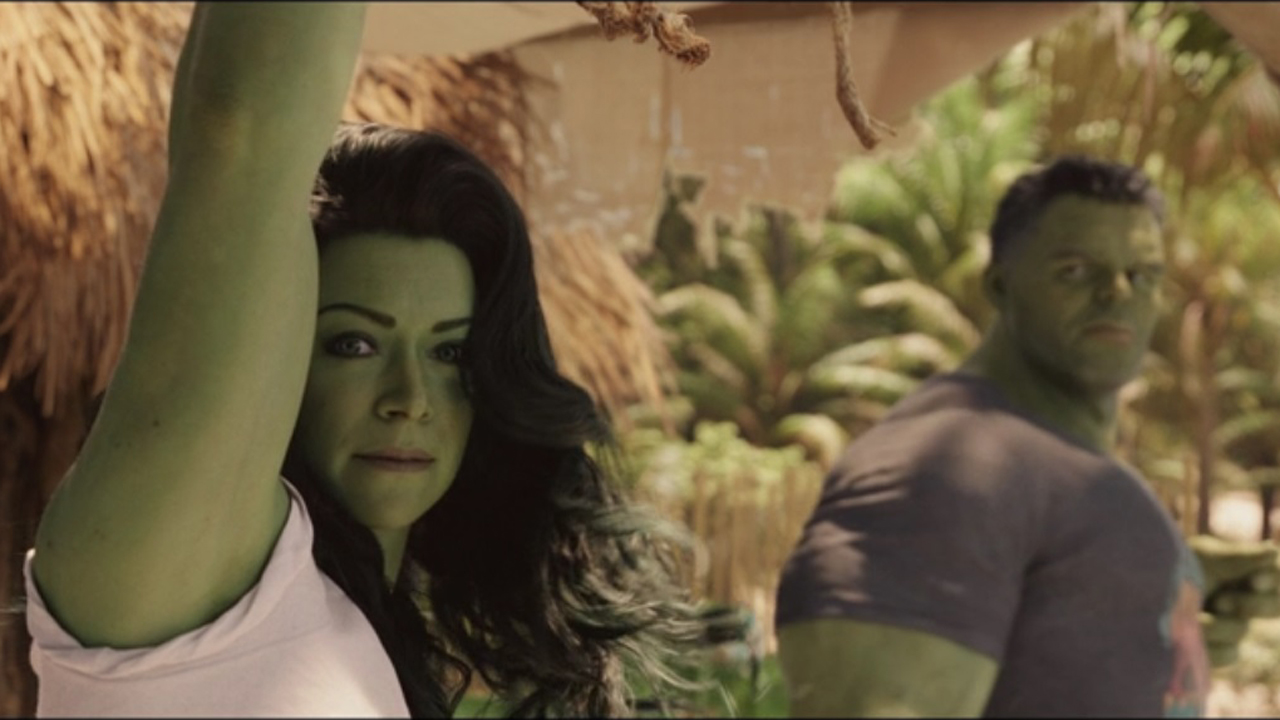
Warning: mild spoilers for She-Hulk: Attorney at Law below
Life imitates art. It’s a phrase She-Hulk: Attorney at Law showrunner Jessica Gao and director Kat Coiro may have repeated to themselves since the Marvel TV show’s first trailer was released in May.
They’d have good reason to do so. Like the Disney Plus series’ titular heroine, Gao and Coiro spent countless hours defending themselves – and others – amid a wave of criticism ahead of She-Hulk’s live-action debut.
Sexist comments about the character’s Marvel Cinematic Universe (MCU) design, coupled with fan complaints about the MCU Phase 4 project’s visual effects (VFX), have dominated the headlines, which is less than ideal for Marvel Studios and everyone associated with the show.
Given She-Hulk: Attorney at Law’s positioning as a legal comedy, the irony of being defendants in the vast courtroom of the internet isn’t lost on Gao and Coiro. However, just like the series' superpowered star, the pair have no problem arguing their corner, especially when it comes to the objectification of women.
“I think people are so quick to criticize women's bodies,” Coiro tells TechRadar. “People say ‘Oh, she should be like a bodybuilder’ or ‘She must be muscular like she is in the comics’.
What we developed for our She-Hulk was very specific. Sure, she draws attention, but we wanted someone who could go on dates and work in a regular office – someone who could have these very real moments and struggle with them in spite of her abilities.”
Get daily insight, inspiration and deals in your inbox
Sign up for breaking news, reviews, opinion, top tech deals, and more.
Lawyer up
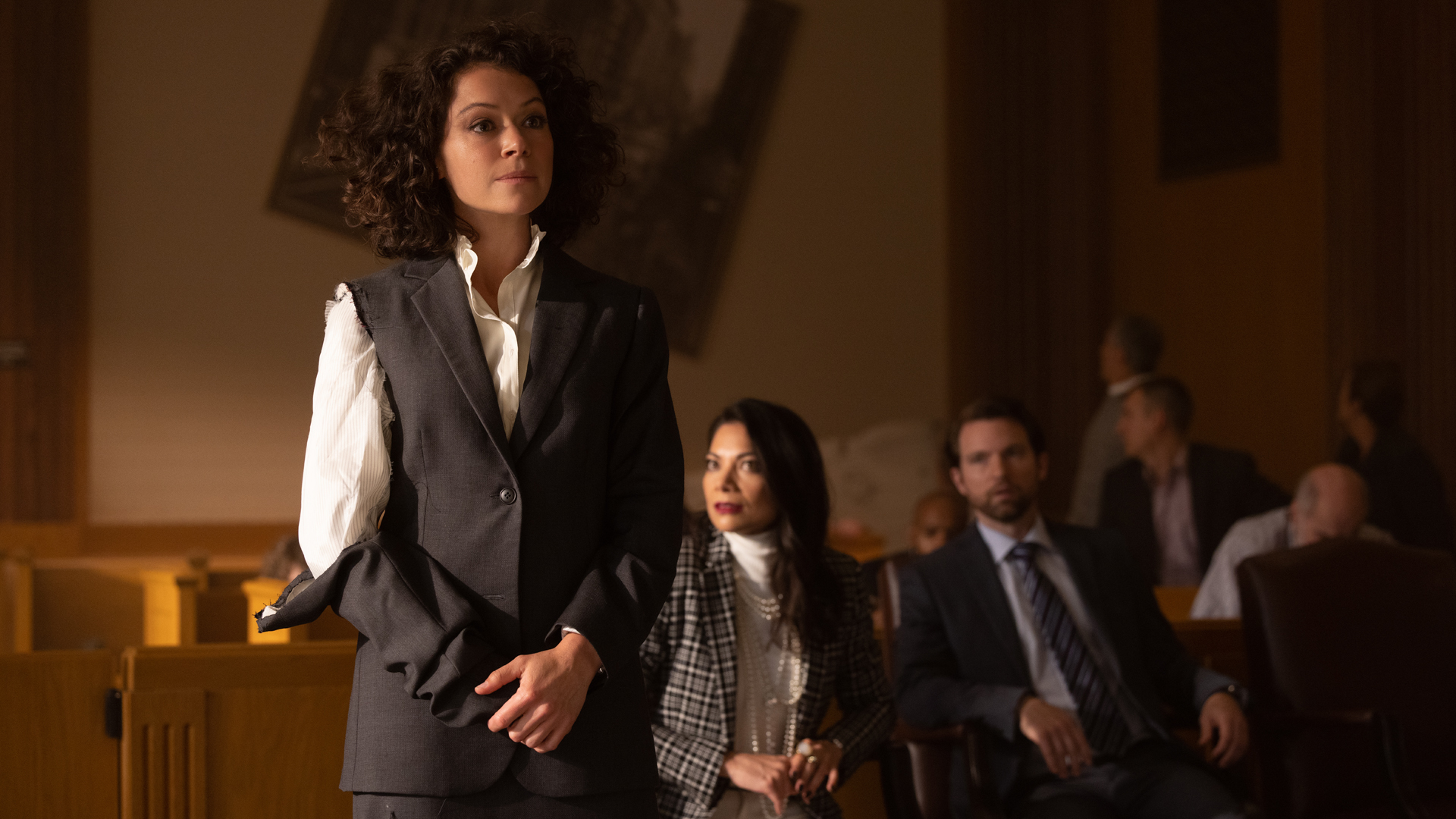
She-Hulk: Attorney at Law stars Tatiana Maslany (Orphan Black, Perry Mason) as Jennifer Walters, a 30-something lawyer and cousin to Bruce Banner (Mark Ruffalo), aka the Hulk.
During a family road trip, the pair are in a car crash, which leads to Walters rescuing Banner. However, one of Walters’ open wounds is accidentally contaminated with Banner’s gamma-irradiated blood, turning her into a mean, green, superpowered individual. Refusing to give up the life she had, Walters heads back to California. She soon realizes, though, that juggling her work, social, love, and superhero lives won’t be easy – especially after she’s installed as the head of a new law division specializing in superhuman affairs.
Given its law firm-centric premise, it’s unsurprising that Gao and her writing team were heavily inspired by legal dramas. As Gao previously told TechRadar, hit Netflix show Better Call Saul, popular HBO Max series Insecure, and even real-life crime thrillers, such as The People v O.J. Simpson: American Crime Story, were big influences during its development.
What we developed for our She-Hulk was very specific
Kat Coiro, She-Hulk co-director
Like every MCU project, though, She-Hulk contains its fair share of humor – or, in this case, a lot of it. Walters is renowned for being a wisecracking, witty individual in the comics, with her signature fourth wall breaking (Walters was doing this years before Deadpool was created) key to making her such a popular character.
This vital component of Walters’ personality has been retained for her live-action series. It's a characteristic that allows Gao and company to give the show a uniquely amusing flavor, which is explored in each episode, as well as their mid- and post-credits scenes.
There are many instances in the show where Maslany ad-libs to humorous effect – as Gao reveals: “Tatiana is a really gifted improviser”. But, when it came to filming Walters’ sidebars with the audience, unscripted moments weren’t the order of the day.
“The fourth wall breaks were very planned,” Gao reveals. “You have to set the camera up so that Tatiana is able to turn, give a distinct look at the camera, and deliver her lines.
"But even in those moments, Tatiana really infused Jennifer and She-Hulk with humanity and made her feel real. She really brought so much of herself to each part of the character.”
Taking the cameo witness stand
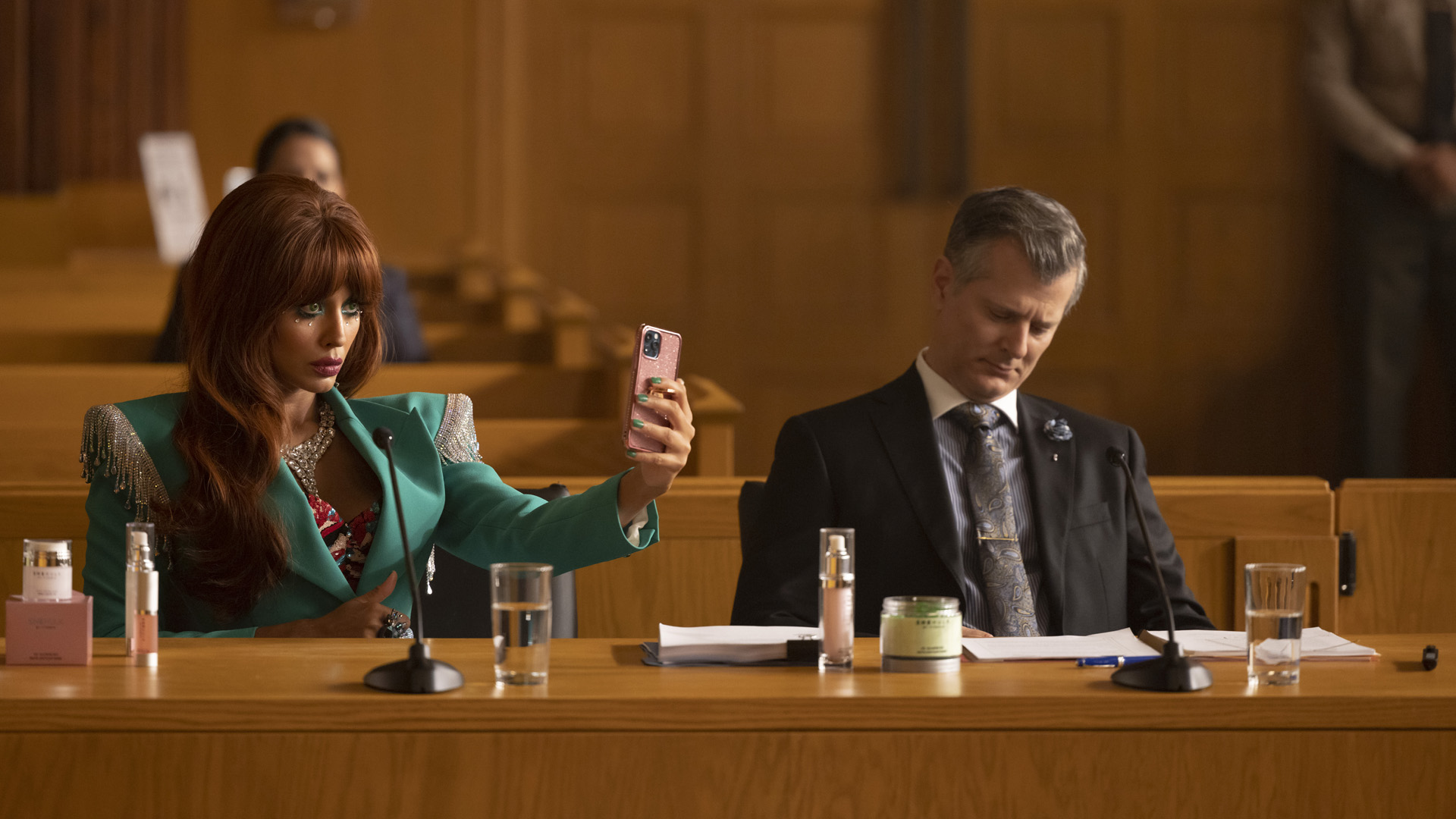
She-Hulk’s eclectic cast of characters, particularly those with superhuman abilities, are equally as important to the show’s legal comedy angle.
From MCU stalwarts, such as Doctor Strange’s Wong (Benedict Wong) and The Incredible Hulk’s Emil Blonsky (Tim Roth), to obscure heroes and villains like Frog Man and Titania, Attorney at Law puts its superpowered individuals in a variety of funny legal situations.
Add another famous superhero lawyer – Daredevil, played once more by Charlie Cox – into the mix, and things get complicated for Walters very quickly.
For Gao and Coiro, the opportunity to include fan favorite and off-brand superpowered beings in the MCU was one they couldn’t pass on. Although, there were certain rules they had to abide by when drawing up a list of must-have characters.
“First and foremost, we wanted to create a world that felt grounded,” Coiro says. “It just so happens that our world is the MCU. It's full of crazy and obscure characters and we want to see these different superheroes, so you'll see them peppered throughout.”
“What’s great about this show is it allowed us to mine the MCU and the comics for characters,” Gao elaborates.
“We’d pick someone, who we thought might be interesting, and then we’d have fun asking ‘If this character was embroiled in some sort of legal issue, what would it be?’ and ‘What kind of lawsuit or trouble would land them in court?’. Inevitably, we would hit the point where we then have to ask [Marvel Studios president] Kevin Feige if we were allowed to use them.”
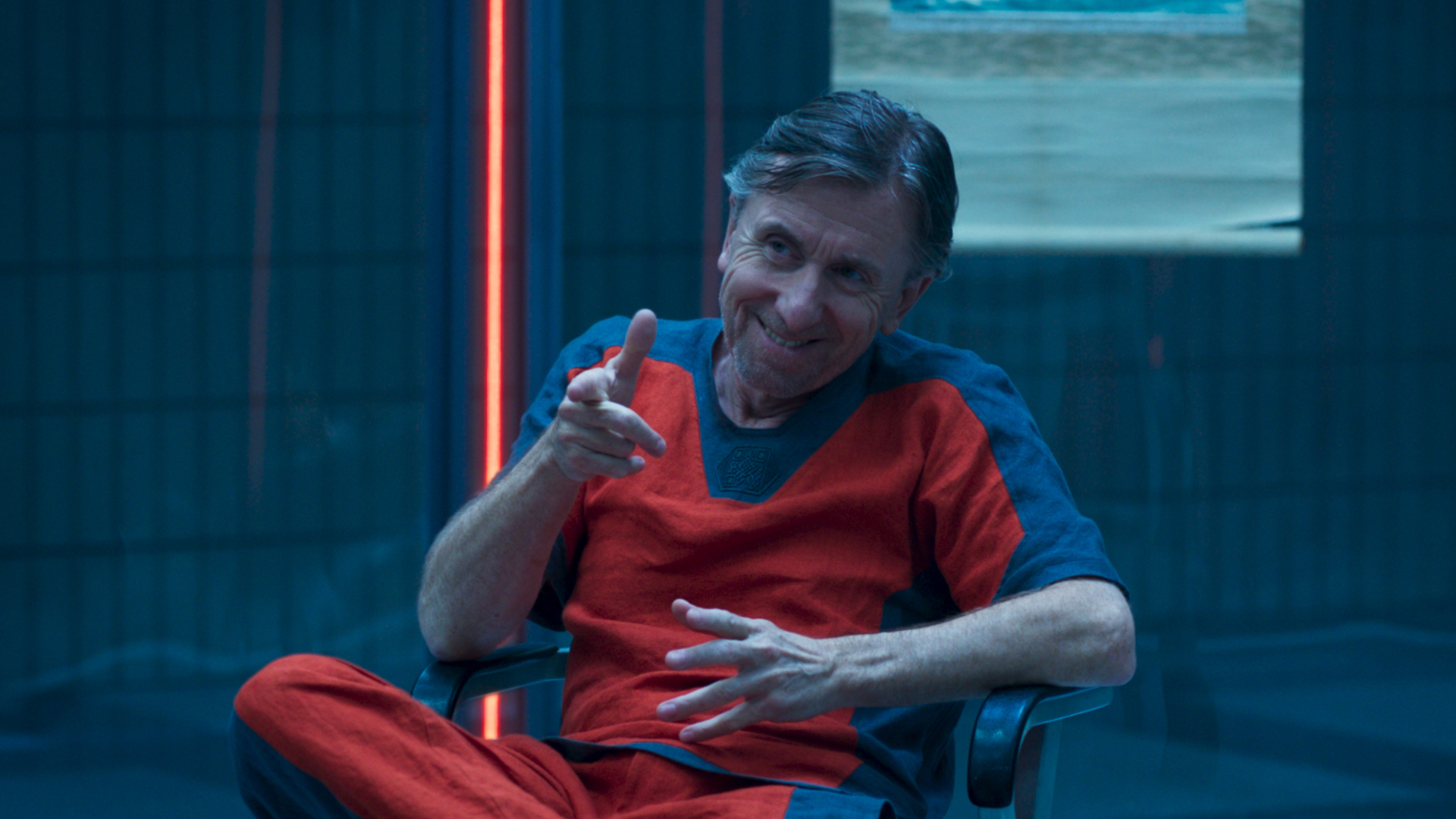
Unfortunately, some characters were off-limits. Coiro and Gao aren’t at liberty to say who didn’t make the cut – although, Gao has since admitted that Spider-Man was one individual they couldn't include – but they understand why Feige couldn’t sign off on certain characters.
“The writers pitched tons of them,” Coiro explains. “But then it would come down to characters who might have an MCU future [in another project]. So it really becomes a collaboration of which superheroes we could use, those who are beloved in the comics, and those who are downright funny.”
“There were quite a few [who we couldn’t use],” Gao adds. “Sometimes it was because of a rights issue, or they [Marvel] had other plans for them.
"It's always a bummer because, by the time we go and ask them to use a character, we've already whipped ourselves into a frenzy with what story we wanted to do.”
Courting controversy
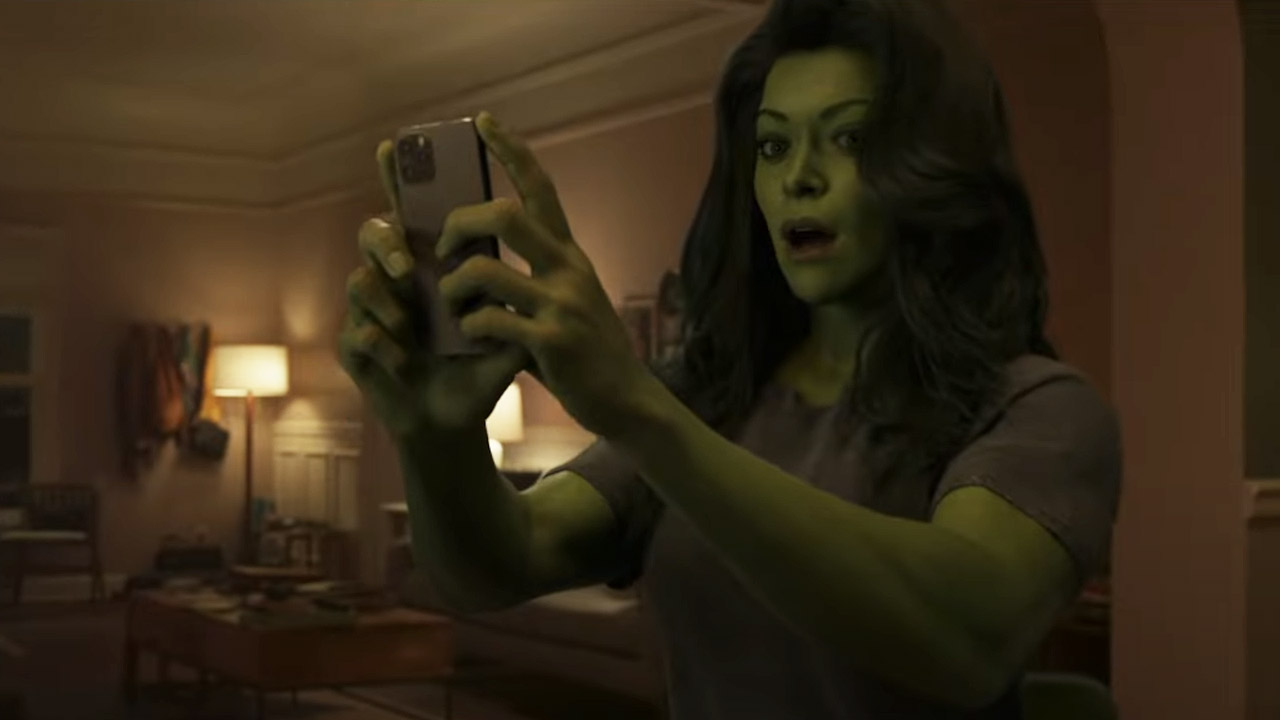
She-Hulk: Attorney at Law may be the funniest MCU production to date – or, at least one of them – but it doesn’t neglect real-world themes and prejudices.
For one, it’s frank about its examination of gender inequality. The series’ approach to misogyny is evident from the get-go, with Walters and her fellow female employees forced to navigate multiple social settings, such as the workplace or even just walking down the street, where male chauvinism is frustratingly prevalent.
There are even characters, such as Walters’ nemesis Dennis Bukowski (Drew Matthews) and Tony Stark wannabee Todd Phelps (Jon Bass), who are physical embodiments of incel culture and gender discrimination – albeit they’re individuals who are mocked in the show.
Clearly, a show helmed by a predominantly female creative team will have plenty to say about these societal issues – and not just in the real world. The MCU has grappled with its own gender parity problems since its inception, with 2019’s Captain Marvel being the first MCU production to feature a female superhero in the lead role. Since then, other female-led Marvel projects – Black Widow, WandaVision, and Ms Marvel – have been released. More projects, including The Marvels, Echo, and Ironheart will follow suit in 2023.
We’d have fun asking ‘If this character was embroiled in some sort of legal issue, what would it be?’
Jennifer Gao, She-Hulk showrunner
Still, more needs to be done regarding gender bias in the MCU and in real life. After the first trailer’s release on May 17, myriad internet users made sexist and degrading remarks about She-Hulk’s design, the series’ “terrible attempts at feminism”, and Marvel’s efforts to turn the previously male-dominant MCU into the “MSheU”.
This wasn’t the first time the show had been negatively received, with Gao telling TechRadar the “misogynistic chatter” that followed the series’ initial announcement inspired numerous plot points. Even so, the sheer number of demeaning comments have aggravated the show’s cast and crew, with many delivering robust rebuttals to the criticism it’s received pre-release.
“When it comes to women’s bodies, I feel like you can’t win,” Coiro says. “They’re too big or too small, they’re too ‘this’ or ‘that’. We based She-Hulk on Misty Copeland and Olympians and dancers, who are very strong and fit women but aren’t bodybuilders. I guarantee if we’d gone the other way and made her too muscular, people would’ve complained about that, too.”
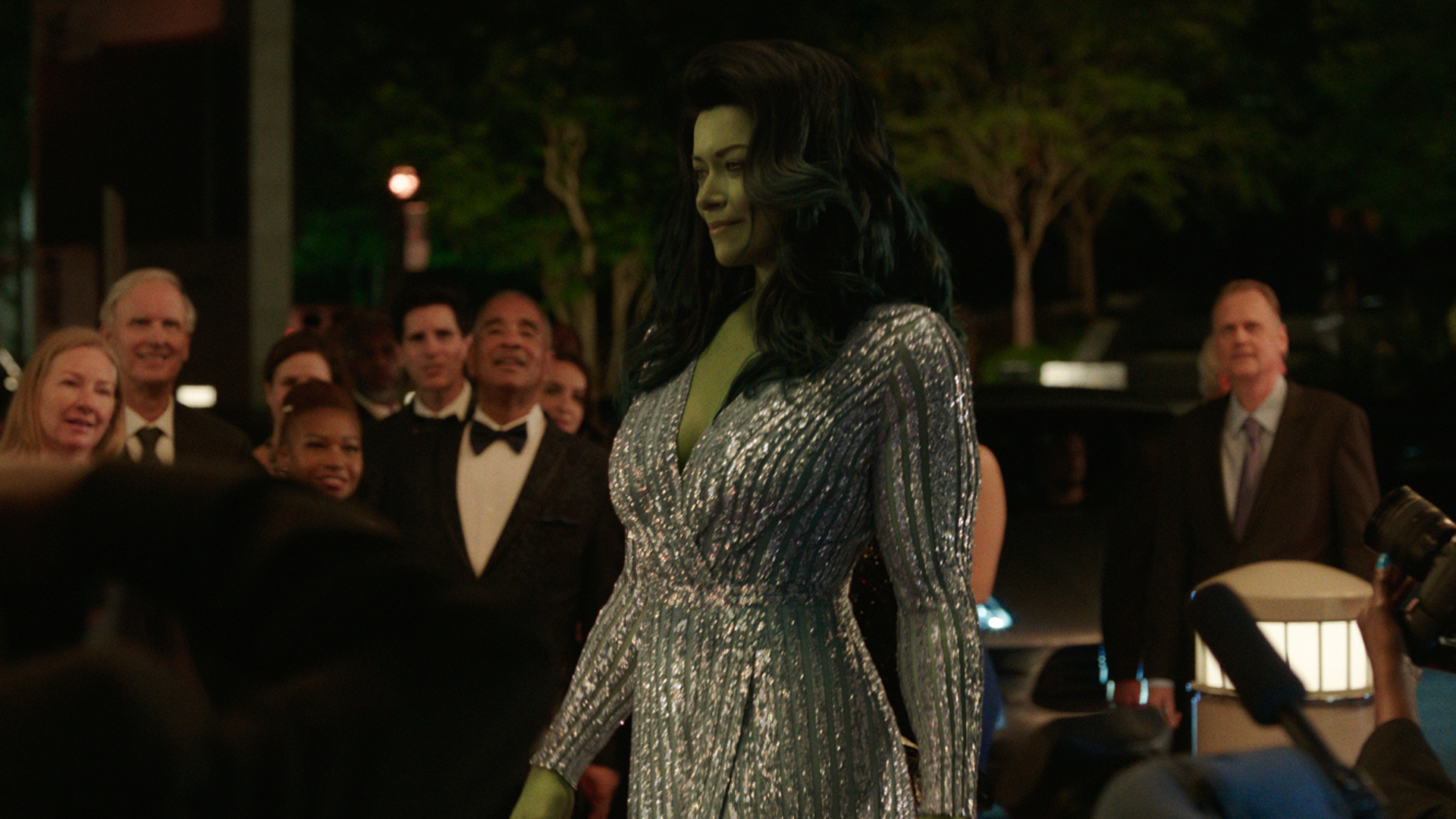
Fans also took umbrage with the quality of the VFX in She-Hulk’s first trailer. Many commented on how poor its CGI elements looked and in the weeks that followed several VFX artists revealed they have been overworked and underappreciated by Marvel Studios for years. According to numerous artists, the problem largely stems from VFX studios undercutting each other to work on MCU projects, only for the successful VFX studio’s employees to endure unrelenting crunch to complete the work on time.
For their part, Coiro, Gao, and Maslany came out in support of VFX artists (during Disney's Television Critics Association (TCA) panel, no less) calling for better working conditions and potential unionization. And, when asked about the growing VFX fallout, Coiro reaffirms her stance of standing in solidarity with those affected.
“I'm heavily involved in behind the scenes, but what I'm not heavily involved in is the VFX houses,” Coiro says. “Marvel hires companies who manage all the individual artists, so we work mostly with Marvel, who then deal with the other side of things. I don't know the stories of the individual artists, but any artist who deserves better working conditions has my full support.”
I keep seeing some of the quotes from the She-Hulk TCA panel regarding what they said when asked about the VFX and the people creating the VFX but rarely all of them together, and sometimes feeling very out of context to the question, so here's what was said in its entirety. pic.twitter.com/KLahCceLy7August 6, 2022
Based on the show’s premiere, and the following three episodes TechRadar has also seen, the show’s less-than-stellar CGI has been remedied. Still, the discourse surrounding Marvel, the VFX studios it hires, and the artists those companies employ, persists. The backlash has been so great that Marvel Studios is reportedly looking at setting up its own in-house VFX studio – a small but potentially significant step in the right direction. That is, as long as it’s an employee-friendly environment.
The flak She-Hulk’s TV show has received would make any creator think twice about working on another Marvel project, but Coiro and Gao say they’re open to working in the MCU again. The duo refuse to comment on whether they’ve spoken to Marvel about a second season or (whisper it quietly) a She-Hulk Marvel movie – Gao joking: “I don't want to end up in an unmarked grave at Disneyland”.
In the show’s first episode, Ruffalo’s Hulk tells his namesake: “Being a superhero is a trial by fire” – a quote penned by Gao, but one that, based on the criticism they've had to navigate, is sure to resonate with her, Coiro, and the show's other creative leads more now than ever. She-Hulk: Attorney at Law has been pounded by dissenting voices and, while some of that negativity has been valid – namely, that concerning the VFX fallout – Gao, Coiro, and company can’t be held accountable for that backlash.
Like the 6’7 superhero who stares in Attorney at Law, the pair have stood tall amid the adversity. Cliché as it is to say, they've won their day in court. For a show with a superhero lawyer as its lead, that feels suitably apt.
She-Hulk: Attorney at Law’s first episode is available to stream now on Disney Plus. Subsequent episodes will be released weekly on Thursdays.
As TechRadar's senior entertainment reporter, Tom covers all of the latest movies, TV shows, and streaming service news that you need to know about. You'll regularly find him writing about the Marvel Cinematic Universe, Star Wars, Netflix, Prime Video, Disney Plus, and many other topics of interest.
An NCTJ-accredited journalist, Tom also writes reviews, analytical articles, opinion pieces, and interview-led features on the biggest franchises, actors, directors and other industry leaders. You may see his quotes pop up in the odd official Marvel Studios video, too, such as this Moon Knight TV spot.
Away from work, Tom can be found checking out the latest video games, immersing himself in his favorite sporting pastime of football, reading the many unread books on his shelf, staying fit at the gym, and petting every dog he comes across. Got a scoop, interesting story, or an intriguing angle on the latest news in entertainment? Feel free to drop him a line.